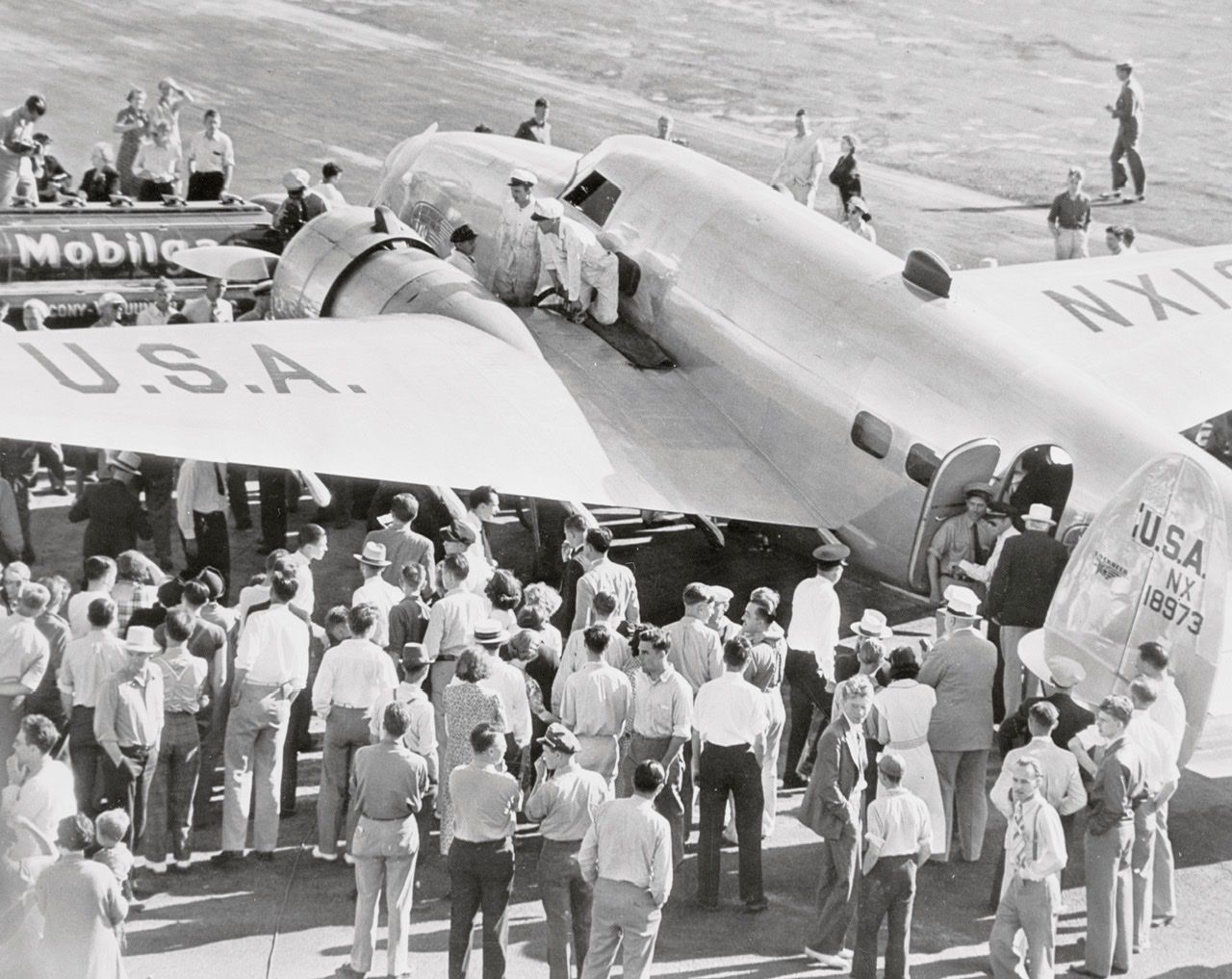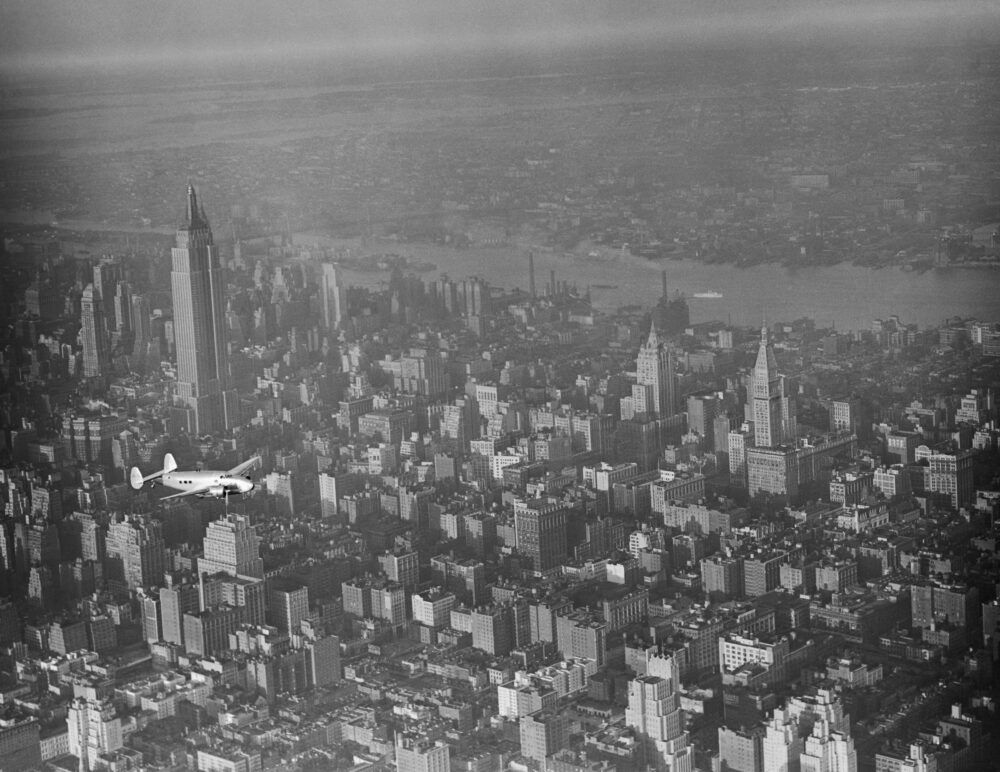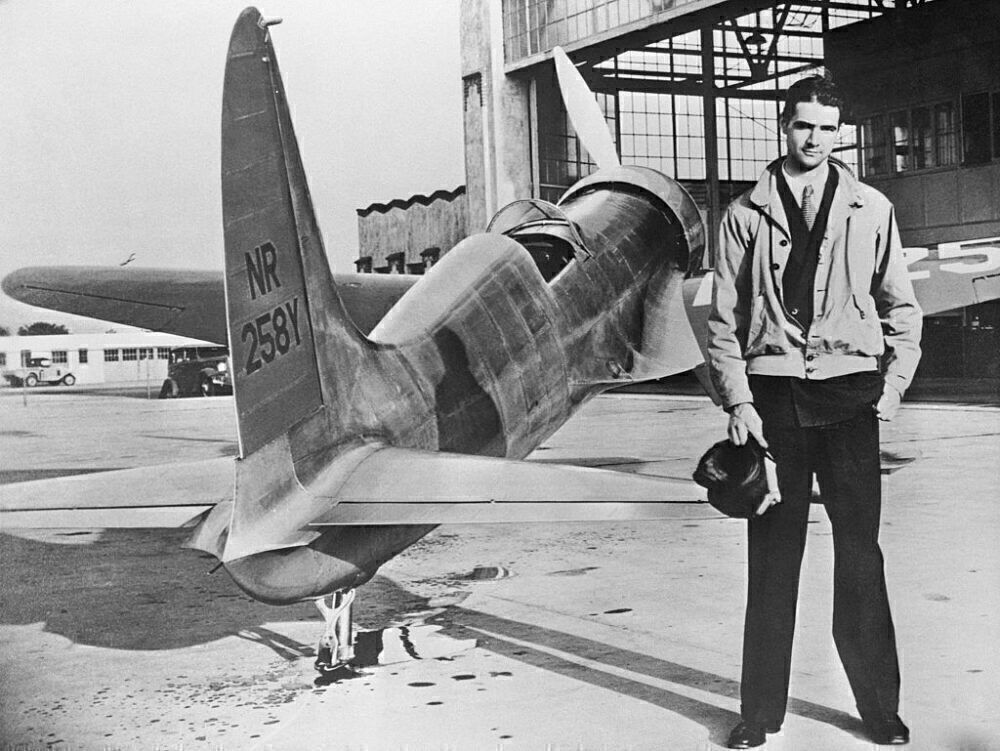In July 1933, Wiley Post returned to New York’s Floyd Bennett Field in Brooklyn, New York, seven days, 18 hours, 49 minutes after leaving to set an around the world record. Five years later, on July 14th, 1938, Howard Hughes would beat this time by three days 23 hours 33 minutes.
The right backing
Hughes and a crew of four left Floyd Bennett on Monday, July 10th to circle the Northern Hemisphere in a Lockheed Super Electra Special, Model 14-N2. The aircraft held registration NX18973 and transported Hughes, along with co-pilot and navigator Harry P. McLean Connor, another navigator, 1st Lieutenant Thomas L. Thurlow, radio operator Richard R. Stoddart, and flight engineer Edward Lund.
Stay informed: Sign up for our daily and weekly aviation news digests.
On their way
After leaving at 19:19, the team left to fly on a route that took them to Le Bourget, Paris, France, Moscow, USSR, Omsk, Siberia, Yakutsk, ASSR, Fairbanks, Alaska, and Minneapolis, Minnesota.
When the aircraft arrived back at Floyd Bennett, it landed at the exact spot where it took off from. Thousands were waiting to applaud Hughes and the other four on board after flew around the world in three days, 19 hours and 17 minutes.
“When the airmen arrived New York went wild. Thousands of people were waiting at the aerodrome, and as soon as the plane was sighted pandemonium began. When it came down the crowd broke through the rails at one point, and were repaid for their enthusiasm by having truncheons used on them as the police tried to force them back,” The Guardian reported.
“Over a thousand policemen and fifty soldiers were there to try to keep order. Car horns, whistles, sirens, rattles, and everything that could make a noise did. Mr Whalen, president of the New York World Fair, and Mr LaGuardia, Mayor of New York, were the first to enter the plane while the flyers were still inside. Mr Whalen called for silence. Mr LaGuardia congratulated the flyers. They were ‘the finest crew who ever took a ship around the world.’”
One of several adventures
Overall, this feat is just one of several ambitious achievements by Howard Hughes. The pioneer had an eventful career, spanning over several decades during the most influential periods in aviation history. Even though he was a daring pilot, he was also an engineer, businessman, and movie producer.
This trip with the Lockheed Super Electra Special would have given the industry veteran even more courage to take aviation to the next level. The 1930s saw numerous outstanding adventures, and it’s no surprise that Hughes was part of this wave.
What are your thoughts about Howard Hughes’s distance record around the Northern Hemisphere with a Lockheed Electra 14 in July 1938? Which other milestones would you like us to cover in the future? Let us know what you think of these events in the comment section.



